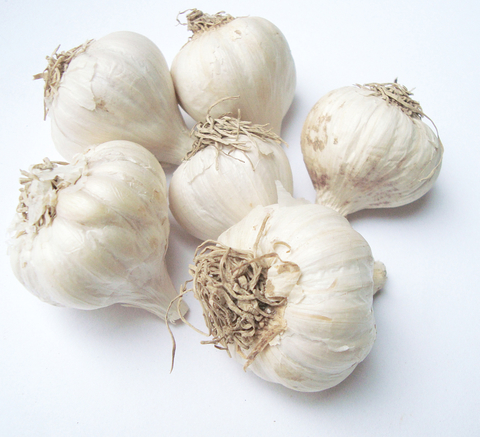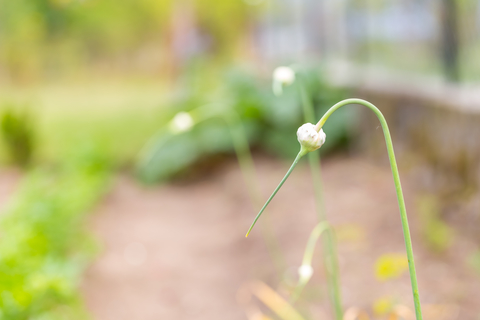Better Homes And Gardens Growing Garlic
- Home
- Yard and garden
- Find plants
- Vegetables
- Growing garlic
Quick facts
- Garlic grows best in well-drained, moisture-retentive soil with pH between 6.0 and 7.0.
- Plant cloves in the fall, usually one or two weeks after the first killing frost.
- Unless you control weeds early, they can easily overtake young garlic plants.
- Insects are not a major problem with garlic, although onion maggot is a potential pest.
- Depending on variety and climate zone, harvest garlic between late June and late July.

Culinary cloves
- Garlic (Allium sativum L.) is a close relative of onions and chives.
- It is a medicinal and culinary herb.
- Garlic forms bulbs that separate into many cloves.
- Each clove is covered with a white-purplish or pinkish, papery sheath.
- Have your soil tested.
- Garlic grows best in well-drained, moisture-retentive soil with pH between 6.0 and 7.0.
- Improve your soil's organic matter content by adding well-rotted manure or compost in spring or fall.
- Do not use fresh manure as it may contain harmful bacteria and may increase weed problems.
- Prior to planting, till your soils to provide a loose growing bed for bulb growth.
- Garlic has a moderate to high demand for nitrogen, so you can incorporate urea before planting.
- Top dress as soon as shoots emerge, then again two to three weeks afterwards.
- Avoid applying nitrogen after the first week in May, or you may delay bulbing.
- You may not need additional nitrogen in the spring if you incorporated enough compost in the fall.
- Continuous use of high phosphorus fertilizer such as 10-10-10 or 15-30-15, or high rates of manure or manure compost results in phosphorus buildup in the soil.
- If your soil tests high in phosphorus, use a low phosphorus (such as 32-3-10, 27-3-3, or 25-3-12) or no phosphorus (such as 30-0-10 or 24-0-15) fertilizer.
- Some runoff may occur with phosphate fertilizer. It can then become a major pollution concern in our lakes, rivers and streams.
- High levels of phosphorus support over-production of algae, which causes significant reduction in water quality.
The mild climate of northern California grows most commercial garlic. These varieties of garlic will not grow well in Minnesota, and will develop a "hot" flavor.
When choosing garlic for your garden, use varieties adapted to cold climates.
Note that elephant garlic is a type of leek, not a true garlic.
Hardneck types

- Common hardneck types are Rocambole, Purple Stripe and Porcelain.
- Hardneck varieties produce a flowering stalk, called a scape.
- Flowers on scapes usually abort and form "bulbils," or small, aerial cloves.
- You can remove scapes just after they start curling and eat them. You can also use more mature scapes in flower arrangements.
Softneck types
- Softneck types include Artichoke and Silverskin.
- These varieties typically produce more cloves and are easy to braid.
- Softneck varieties do not grow a flowering stalk like the hardneck types. Climate can change this quality. A variety that is softneck in one location can form a flowering stalk in a different location.
- To grow garlic, you must plant cloves. Purchase cloves from national or local garlic seed producers.
- Avoid planting cloves from garlic purchased at the grocery store. This garlic, primarily the softneck variety, does not do well under Minnesota conditions.
- Plant cloves in the fall, usually one or two weeks after the first killing frost.
- Roots and shoots will emerge from the cloves by the first hard freeze, but shoots will usually not emerge from the soil until the following spring.
- Separate individual cloves a day or two before planting.
- Plant cloves in double rows, six inches apart. Center the rows on beds, 30 inches apart. Plant cloves pointed side up, with the base of the clove two to three inches from the soil surface.
- Cover beds with three to four inches of leaf or straw mulch to prevent fluctuating temperatures during the winter and early spring, and to help control weeds.
- Remove mulch in the spring after the threat of hard freezes is over to help the soil warm up. You can also leave it in place to help with weed control and preserve soil moisture.
How to keep your garlic plants healthy and productive
|
- Proper watering will help growth of your garlic plants.
- Soak the soil thoroughly when watering, to a depth of at least one inch each week during the growing season.
- Sandy soils require more frequent watering.
- Stop watering two weeks before harvest to avoid staining bulb wrappers and promoting diseases.
- Control weeds early, they can easily overtake young garlic plants.
- Use mulch to reduce annual weed growth. Use straw free of weed seed as mulch.
- A thorough, shallow cultivation before reapplying straw mulch in the spring will reduce annual weed populations.
Insects are not a major problem with garlic, although onion maggot is a potential pest. Onion maggots bore into plant stems, causing the plants to turn yellow and wilt.
Garlic is vulnerable to several types of rot. Fusarium basal rot is the most common.
To avoid these diseases, plant only healthy cloves, manage weeds in the garden and take care not to injure garlic bulbs while working in the garden.
Plant garlic in an area where you have not planted onions, chives, leeks, shallots or garlic for the past four years.
For help diagnosing unknown problems, visit What's wrong with my plant?
- Harvesting too early will result in small bulbs. Harvesting too late will result in cloves popping out of bulbs.
- Depending on variety and climate zone, harvest garlic between late June and late July.
- Begin harvesting when the lower leaves turn brown and when half or slightly more than half of the upper leaves remain green.
- Alternatively, you can pull a few bulbs and cut them in half. If the cloves fill the skins, then the bulbs are ready to harvest.
- Harvest the garlic plants with shoots and bulbs attached. Knock off any large clumps of soil.
- Put the plants in a warm, dry, airy place for three to four weeks to cure. This will dry the sheaths surrounding the bulbs, as well as the shoots and roots.
- After curing, cut the shoots one-half to one inch above the bulbs and the roots trimmed close to the bulb base.
- You can save garlic cloves from one crop to the next. Keep the biggest one for planting the following year.
Reviewed in 2018
Better Homes And Gardens Growing Garlic
Source: https://extension.umn.edu/vegetables/growing-garlic
Posted by: austinuntoonesch.blogspot.com

0 Response to "Better Homes And Gardens Growing Garlic"
Post a Comment